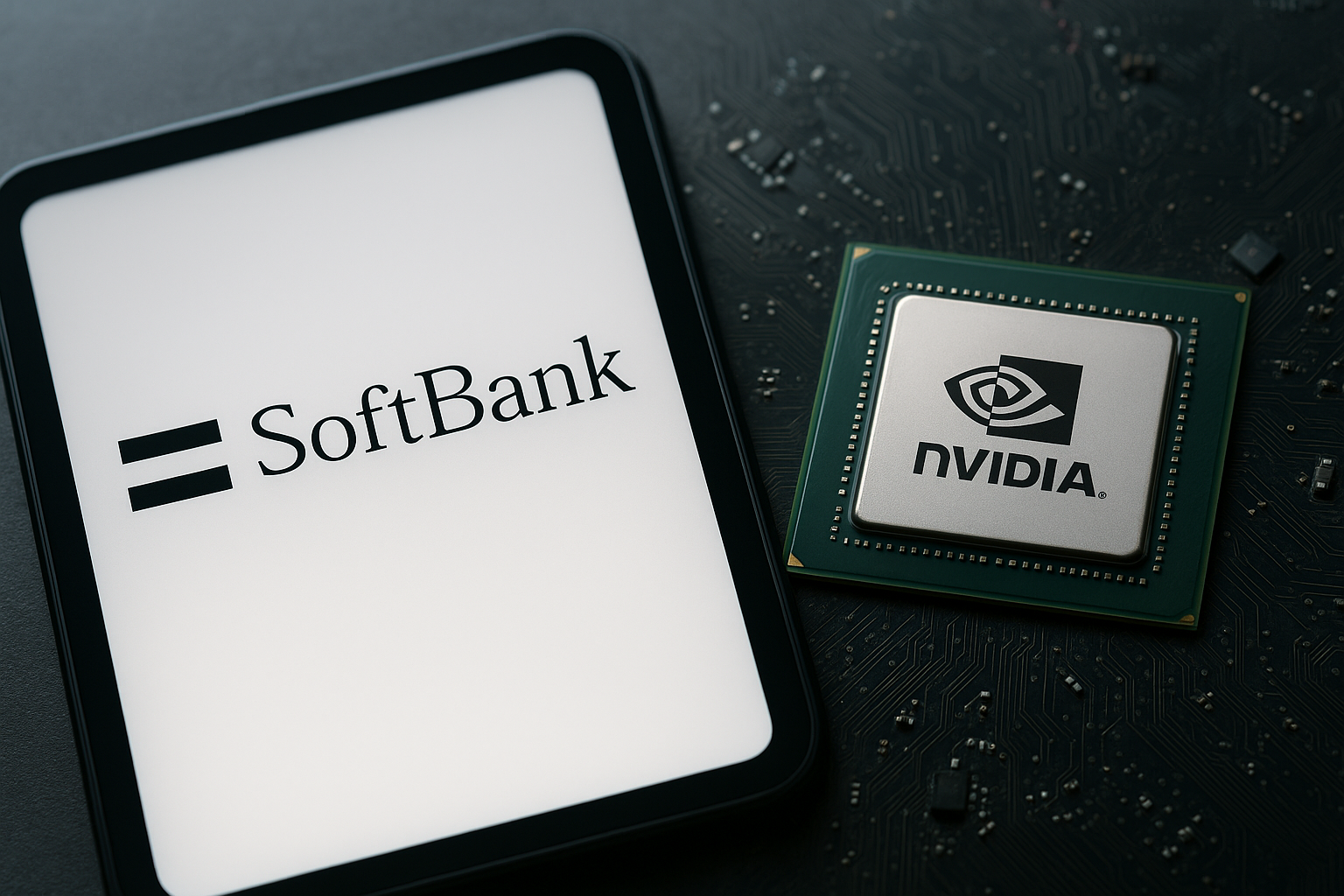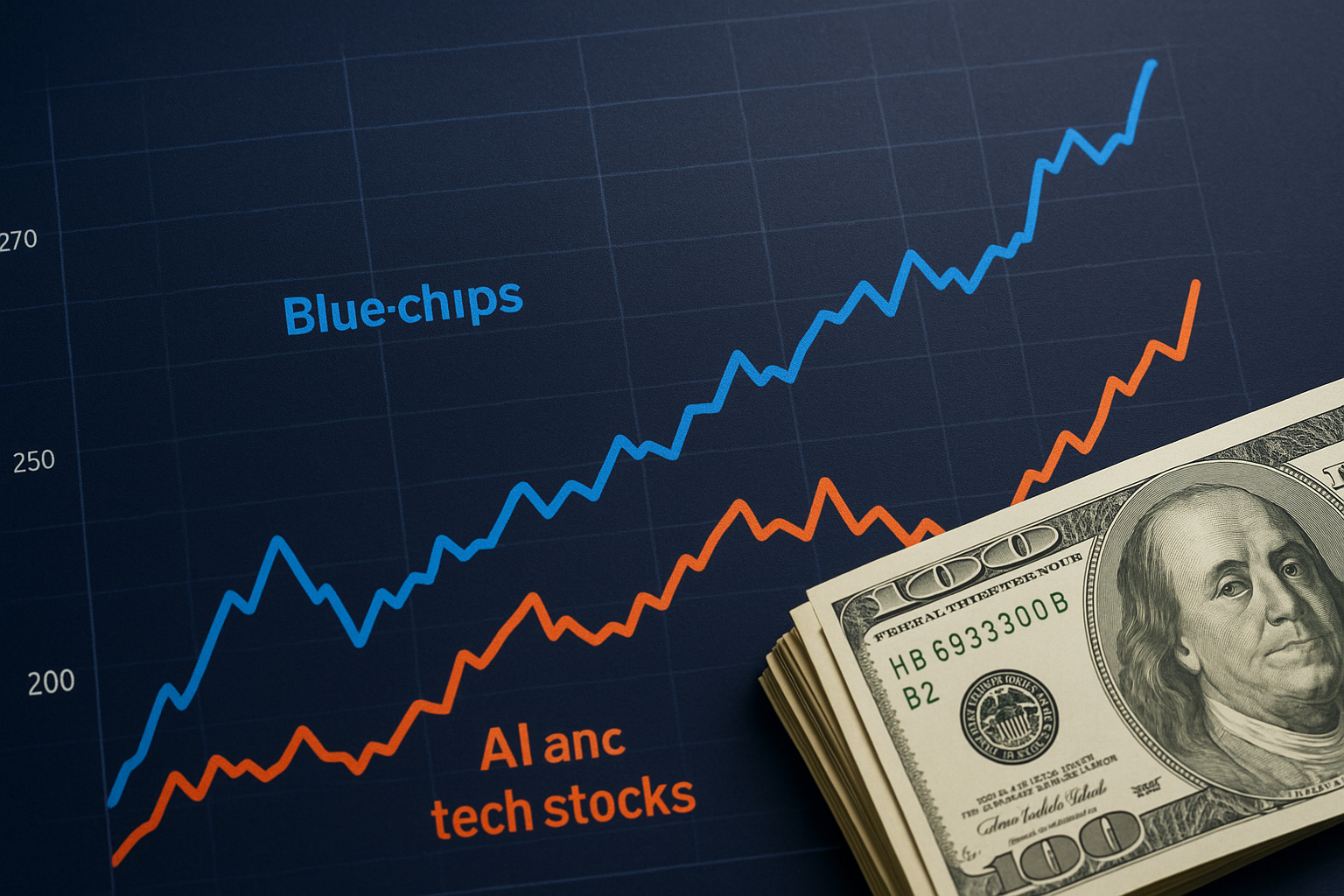SoftBank Group’s decision to offload roughly $5.8 billion worth of Nvidia shares has sent ripples through global equity and AI markets, underscoring a pivotal moment in the capital-intensive race for artificial intelligence dominance. The sale—part of a broader financing plan that includes an estimated $22.5 billion follow-on investment into OpenAI and a $6.5 billion semiconductor acquisition—has reignited debate over whether the AI boom’s valuations and funding requirements are approaching an inflection point.
This move highlights both the massive capital appetite of AI infrastructure projects and the strategic repositioning among major investors seeking liquidity amid one of the most expensive technological transformations in decades.
The AI Gold Rush Meets a Liquidity Reality
SoftBank, long known for its aggressive growth bets, has again become a barometer for the broader tech market. As reported by Reuters and The Wall Street Journal, the group’s partial exit from Nvidia—a company whose shares have soared over 180% year-to-date—illustrates a dual reality: while AI remains one of the most promising investment frontiers, the sector’s cash burn and valuation strain are increasingly difficult to ignore.
SoftBank’s move follows similar signals from other deep-pocketed investors recalibrating exposure to high-momentum AI assets. The Guardian noted that the sale could reflect an effort to “de-risk” amid concerns that the AI infrastructure buildout may be outpacing near-term revenue generation. The proceeds are reportedly being redirected toward private-market ventures, chip development, and data-center infrastructure—areas where the group sees longer-term upside.
Why This Matters for Investors
The AI ecosystem has rapidly become a battleground for capital. Giants such as Microsoft, Amazon, Alphabet, and Meta are collectively expected to spend over $250 billion on AI infrastructure between 2024 and 2026, according to Bloomberg Intelligence. Yet profitability remains elusive for many startups and chip-dependent ventures, which are still navigating uncertain monetization paths.
SoftBank’s stake sale suggests that even the most well-capitalized investors are balancing AI ambition with liquidity management. This could mark a new phase of consolidation, where capital-intensive AI firms may face pressure to merge, streamline, or seek strategic investors.
Analysts at JPMorgan have warned that “AI valuations are entering a zone of diminishing returns,” with forward P/E ratios in the semiconductor sector now exceeding 40x—levels typically seen near cyclical peaks. That dynamic, combined with tighter global liquidity conditions, may temper speculative enthusiasm across the AI and semiconductor space.
Future Trends to Watch
- AI Infrastructure Spending Plateau – Expect a gradual slowdown in hyperscale data center buildouts as firms shift from raw capacity expansion to efficiency and profitability.
- Consolidation in the AI Supply Chain – Smaller chip designers, software integrators, and cloud service firms could become M&A targets as funding costs rise.
- Capital Rotation Toward “AI Enablers” – Investors may pivot toward companies providing the tools, materials, and infrastructure behind AI rather than pure-play developers. This includes semiconductor equipment makers, cloud infrastructure REITs, and high-efficiency power providers.
- Regulatory and Policy Intervention – As AI spending balloons, governments may introduce incentives, oversight, or restrictions that alter capital allocation patterns—especially in the U.S., EU, and Japan.
Key Investment Insight
For investors, the takeaway is clear: AI remains a long-term growth frontier but is entering a capital-intensive consolidation phase. Valuations in top-tier AI and semiconductor names may face short-term volatility as funding demands collide with profit expectations.
Prudent investors should:
- Reassess exposure to speculative AI ventures with unclear cash flow visibility.
- Prioritize established firms with diversified revenue streams and positive free cash flow (e.g., Nvidia, AMD, Microsoft, and Taiwan Semiconductor).
- Watch for secondary opportunities in the “AI plumbing” layer—companies building the backbone of compute and data infrastructure.
- Remain agile to sector rotation, as capital may temporarily shift back toward value, industrials, and defensive plays.
The Broader Market Signal
SoftBank’s Nvidia stake sale may not just be about portfolio rebalancing—it could signal the first major liquidity test of the AI bull market. As investors chase growth amid tightening credit and high borrowing costs, the distinction between visionary innovation and overvaluation becomes increasingly blurred.
For long-term investors, this development reinforces the importance of quality over hype, disciplined capital allocation, and diversified exposure to the broader digital economy rather than single-theme speculation.
Stay ahead of the market’s turning points and follow MoneyNews.Today for daily insights into how global capital, innovation, and policy are reshaping the next investment cycle.





